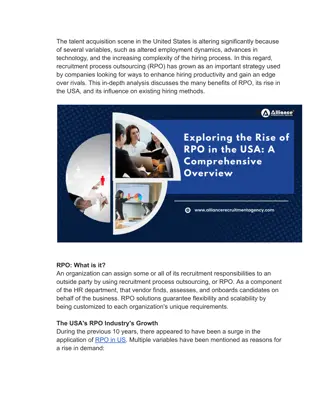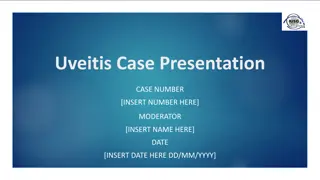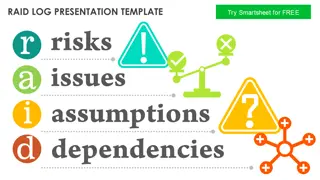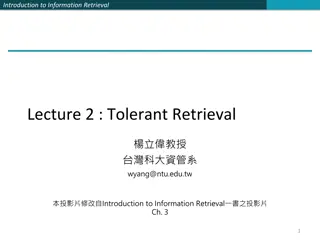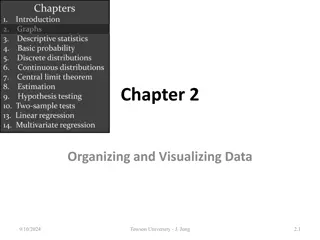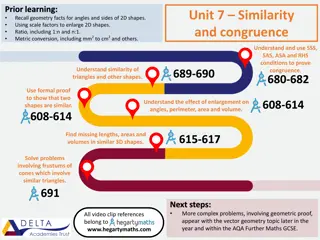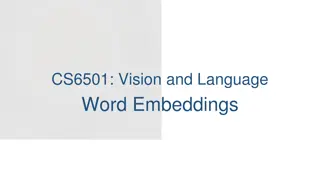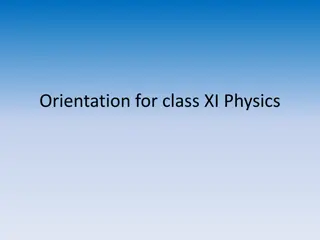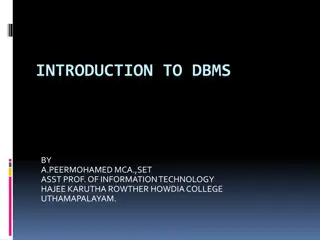Understanding GenICam: A Comprehensive Overview
GenICam, short for Generic Interface for Cameras, offers a standardized programming interface for various devices, primarily cameras, irrespective of the interface technology they employ. This system ensures uniformity in API across different devices, simplifying application development. GenICam comprises GenApi for providing a generic API via XML files, SFNC for standardizing device feature names and GenTL for standardizing transport layer programming. Through GenICam, users can access XML files within cameras to identify available features and generate EPICS database and OPI screens automatically.
Download Presentation

Please find below an Image/Link to download the presentation.
The content on the website is provided AS IS for your information and personal use only. It may not be sold, licensed, or shared on other websites without obtaining consent from the author. Download presentation by click this link. If you encounter any issues during the download, it is possible that the publisher has removed the file from their server.
E N D
Presentation Transcript
Enhanced Support for GenICam Cameras and Detectors Mark Rivers GeoSoilEnviroCARS, Advanced Photon Source University of Chicago
GenICam Overview Generic Interface for Cameras standard is the base for plug & play handling of cameras and devices. From European Machine Vision Association (EMVA) The goal of GenICamTM(Generic Interface for Cameras) is to provide a generic programming interface for all kinds of devices (mainly cameras), no matter what interface technology (GigE Vision, USB3 Vision, CoaXPress, Camera Link HS, Camera Link etc.) they are using or what features they are implementing. The result is that the application programming interface (API) will be identical regardless of interface technology.
GenICam Overview GenApi Defines the mechanism used to provide the generic API via a self- describing XML file in the device. Part of GenApi is the Schema, which defines the format of the XML file. SFNC (Standard Features Naming Convention) Standardizes the name, type, meaning and use of device features, so that devices from different vendors always use the same names for the same functionality. GenTL (Transport Layer) Standardizes the transport layer programming interface. It is a low-level API to provide a standard interface to a device regardless of the transport layer It allows enumerating devices, accessing device registers, streaming data and delivering asynchronous events. GenTL also has its own SFNC.
Interface Standards used by GenICam GigE Vision USB3 Vision Camera Link Camera Link HS IIDC2 (Firewire)
GenICam XML Files Every GenICam camera has an XML file inside it that can be accessed to determine the cameras available features . By reading and parsing this XML file one can automatically generate the EPICS database and OPI screens based on the specific features available in that camera. Small snippet for PixelFormat: <Enumeration Name="PixelFormat" NameSpace="Standard"> <ToolTip>Format of the pixel data.</ToolTip> <Description>Format of the pixel data.</Description> <DisplayName>Pixel Format</DisplayName> <Visibility> Beginner</Visibility> <pIsLocked>TLParamsLocked</pIsLocked> <ImposedAccessMode>RW</ImposedAccessMode> <EnumEntry Name="Mono8" NameSpace="Standard"> <ToolTip>Pixel format set to Mono 8.</ToolTip> <Description>Pixel format set to Mono 8.</Description> <DisplayName>Mono 8</DisplayName> <pIsImplemented>Mono8Inq_Reg</pIsImplemented> <Value>0x01080001</Value> </EnumEntry>
GenICam and aravis GenICam is not open source There is a reference implementation of the GenICam API, but it cannot be released publicly This is a pain, but we need to live with it aravis is an open-source toolkit based on reverse-engineering the GenICam specifications and protocols. Linux-only, based on glib There is an older areaDetector driver, aravisGigE based on aravis https://github.com/AravisProject/aravis aravis previously supported only GigE, but now also supports USB3 I have modified areaDetector/aravisGigE to also support USB3
ADGenICam Vendor APIs for GenICam cameras are very similar, and programming straight to them results in lots of redundant code. Instead create a new areaDetector base class to support any GenICam camera Much of the generic code is in this layer Implements code to get and set GenICam features Creates the areaDetector parameter library dynamically at iocInit from the drvUser fields passed by each record.
ADGenICam Derived classes for real drivers Implement the code to read and write features to the device Implement the code to stream the images from the device ADAravis Uses aravis library Replaces aravisGigE with much of the code moved to the base class Linux only (most versions, e.g. RHEL 7) ADSpinnaker New version of driver for FLIR/Point Grey cameras using their Spinnaker SDK The old FlyCap2 SDK used by ADPointGrey is not supported for their newer cameras (e.g. BlackFlyS and Oryx 10Gbit) Windows and new versions of Linux (e.g. Ubuntu 18, not RHEL 7) ADVimba New driver for AVT/Prosilica cameras using their Vimba SDK The old pvAPI SDK used by ADProsilica is obsolete and no longer supported Windows and Linux (most versions, e.g. RHEL 7)
arv-tool (from aravis package) Find the cameras corvette: ADAravis>bin/linux-x86_64/arv-tool-0.6 Allied Vision Technologies-02-2142A-06178 (164.54.160.58) Allied Vision Technologies-02-2604A-07008 (164.54.160.104) Allied Vision Technologies-50-0503317598 (164.54.160.62) Allied Vision Technologies-50-0503419258 (164.54.160.21) PointGrey-13481965 (164.54.160.114) Prosilica-02-2142A-06110 (164.54.160.57) Extract the XML file >arv-tool-0.6 -n PointGrey-13481965 genicam > BFly-20E4C.xml Look at the XML file >more BFly-20E4C.xml PointGrey-13481965 (164.54.160.114) <?xml version="1.0" encoding="UTF-8"?> <! <RegisterDescription xmlns:xi="http://www.w3.org/2003/XInclude" Must run this once on Linux for each new camera type toc reate XML file.
Python tool to create template file from XML file Create the database with makeDb.py >scripts/makeDb.py BFly-20E4C.xml BFly-20E4C.template Snippet of the template file record(ai, "$(P)$(R)GC_ExposureTime_RBV") { field(DTYP, "asynFloat64") field(INP, "@asyn($(PORT),$(ADDR=0),$(TIMEOUT=1))GC_D_ExposureTime") field(PREC, "3") field(SCAN, "I/O Intr") field(DISA, "0") } record(ao, "$(P)$(R)GC_ExposureTime") { field(DTYP, "asynFloat64") field(OUT, "@asyn($(PORT),$(ADDR=0),$(TIMEOUT=1))GC_D_ExposureTime") field(PREC, "3") field(DISA, "0") } Creates output and readback record for each feature that the camera supports.
Python tool to create medm files from XML file Create the medm files with makeAdl.py >scripts/makeAdl.py BFly-20E4C.xml BFly-20E4C >ls -l *.adl -rw-rw-r-- 1 epics domain users 54593 Apr 17 16:53 BFly-20E4C-features_1.adl -rw-rw-r-- 1 epics domain users 48936 Apr 17 16:53 BFly-20E4C-features_2.adl -rw-rw-r-- 1 epics domain users 21322 Apr 17 16:53 BFly-20E4C-features_3.adl Snippet of the adl file # (Menu Button) menu { object { x=235 y=520 width=150 height=20 } control { chan="$(P)$(R)GC_SaturationAuto" clr=14 bclr=51 } }
Main medm screen for ADGenICam Identical screens are provided for EDM, CSS/BOY, and caQtDM via auto-convert
Auto-generated medm screens for PGR BlackflyS 13Y3M Screen #1
Auto-generated medm screens for PGR BlackflyS 13Y3M Screen #2
ADGenICam Status Good framework, lots is done automatically ADAravis will support any GenICam camera on Linux (GigE, USB3, possibly Camera Link) ADSpinnaker and ADVimba work on Windows and may have higher performance because vendor-optimized transport layer ADSpinnaker is released and working well. ADAravis is released Performance issues for some cameras due to bug in aravis library. It does not correctly implement register caching . ADGenICam reads back all features when any one is changed, since there can be side-effects. aravis developer is actively working on a fix. ADVimba still needs work






